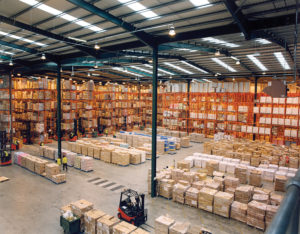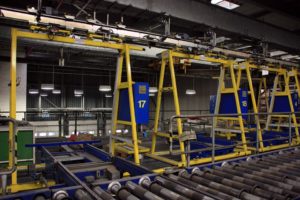
Accurate estimating and quoting are essential in the steel and metals industry. Mistakes are costly, profit margins are thin, and you need to account for the needs of your customers while ensuring they are 100% happy with the quote and process.
To create accurate quotes, you must consider several different factors, while also looking at ways to reduce your costs, expedite production time, and provide your customers with cheaper steel fabrication that isn’t detrimental to your bottom line.
Here are some ways that you can improve management and efficiency, using your resources more effectively and hitting those all-important targets.
Calculate Your Shop Rate
A shop rate is the hourly rate you pay to produce parts. Regardless of the specific processes that you follow—coil processing, metal framing, metal fabrication, plate processing—you need a total figure that accurately estimates your production costs.
Shop rates are calculated by considering all of the following:
Direct Hourly Labor Costs
This refers to the hourly wage that you pay your employees. Simply add the average hourly wage for each employee across all departments and then divide the final figure by the total number of employees. For simplicity, you can then round up the number—$21.90 becomes $22, $24.45 becomes $24.50, etc.
Setup Costs
If you run any machines that require costly setup by specialized staff members, and those machines will be used during the production process, you may want to consider those costs as well. Even if the machines are primarily used by regular employees, the initial costs should still be included as they are essential for the proper operation of the machines and, therefore, the completion of the job.
Overhead Rates
Your overhead rates can be calculated for each department or for the production process on the whole. They cover the total costs of operation, and account for factors such as rent, equipment costs (leases, purchases, maintenance) and utilities. You should also consider depreciation, although this is a tricky figure to calculate.
Calculate Your Sell Rates
Your sell rate is largely based on what the market will pay. As the old adage goes, something is only worth what someone is willing to pay.
You can find the sell rate by checking the industry averages. Once you have this figure, simply deduct the shop rate, and the difference is your potential profit. This also gives you an indicator as to how much movement you have regarding the total price.
If there is a large margin, you can reduce the quote to give customers a better deal, potentially building a strong and long-lasting relationship with them. If the opposite is true, and the margin is too small, you can either quote them a higher price or look at ways to optimize your production process and reduce your costs.
Compare the Actual Price to the Quoted Price
Even the most meticulous and carefully considered quote may be a long way off the actual price. Delays are common, mistakes happen, and there will be things that you just couldn’t legislate for before starting the process. It will give you a few headaches as the gulf between your quote and their price grows narrower, but this information is vital for preventing similar issues in the future.
Track every step of the process and evaluate all of your quotes for accuracy. Did the total labor hours exceed what you had anticipated? Were there any unforeseen issues with the machinery? Did the materials cost more? Did you use more of them? Calculate every process and every resource, determine how much it costs you, and then compare this figure to the initial quote.
Of course, you’re not just looking out for jobs that result in you absorbing higher costs than expected. It could go the other way, giving you a bigger margin and providing you with more room to maneuver on future projects.
How to Provide Accurate Quotes for Metal Fabrication Jobs
Assuming you take all of the above into account, that’s a lot of tracking, analyzing, and processing. It’s a data-heavy process and not something that you can calculate on the back of a napkin on the production floor. Fortunately, there are tools that can simplify all of this and give you a detailed analysis of your production processes.
Enterprise resource planning (ERP) software is at the heart of every successful manufacturing business. ERP is a large software suite that includes various tools and processes designed to improve efficiency and accuracy while offering real-time updates on the inner workings of the business. A dedicated ERP system spans departments such as:
- Project management
- Supply chain management
- Procurement
- Human resources
- Manufacturing
- Accounting and financing
It tracks the production process from the moment materials are requested, ordered, and shipped, right on through the production cycle and to the eventual invoicing and sales. In doing so, it records all of the information you need for proper steel fabrication pricing. You can give your customers an accurate quote, and then monitor the process to see how close to the realized cost that quote was.
Summary: ERP for the Steel and Metal Fabrication Industry
At RealSTEEL, we specialize in providing fully integrated software for the metal fabrication industry. We can provide your company with a complete ERP suite that easily integrates into your existing software and offers a comprehensive, single source of information that all employees can access.
It means you’re not constantly pulling data from various software programs and trying to understand how it all makes sense in the context of your daily production. Some of the software solutions that we can provide for companies in the steel and metals industry include:
- Metal fabrication software
- Steel service center software
- Metals nesting software
- Pipe and Tube software
- Metals optimization software
- Metal framing software
- Plate processor software
- Multi-line processor software
- Cut-to-length software
So, if you want to improve productivity and efficiency, contact us today and learn more about the solutions that we provide.




